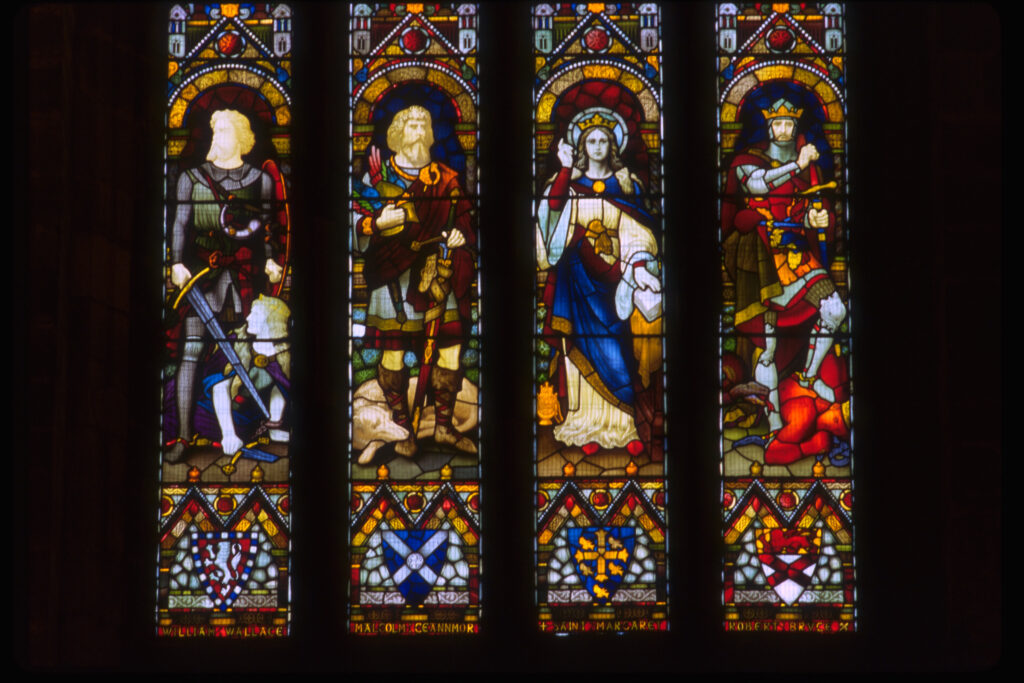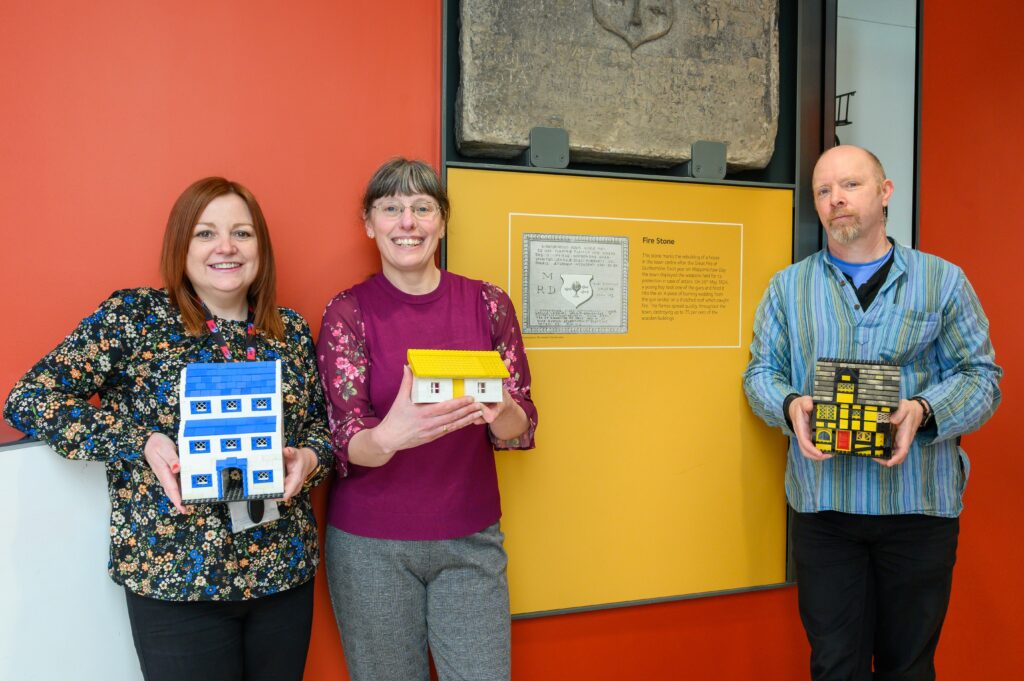Preparatory drawings for a stained glass memorial that philanthropist Andrew Carnegie commissioned for Dunfermline Abbey are to be displayed near the completed window.
Rarely seen drawings of heroic figures from Scotland’s past – created by an eminent Victorian artist – will be exhibited at a landmark venue built by Carnegie.
Sketched templates of four great Scots with links to the Abbey will feature in a retrospective of Sir Joseph Noel Paton, who was a favourite artist of Queen Victoria.
Portraits of Robert the Bruce, William Wallace, King Malcolm III and his wife, Margaret, will go on show with other works at Dunfermline Carnegie Library & Galleries in August.
The show will include works from eight public collections, including the National Galleries of Scotland, the Royal Scottish Academy and Glasgow Museums, as well as many private loans. The exhibition runs from 14 September to 9 February 2025.
It will be the first Paton retrospective in many years. Paton was Queen Victoria’s royal limner – the art equivalent of poet laureate – and, like Carnegie, a native of Dunfermline.
The US-based steel magnate returned briefly to Dunfermline in 1883 to lay the foundation stone of the world’s first purpose-built Carnegie library.
The building was extended in 2017 to include an award-winning museum and art gallery, which will host the Paton exhibition.
Carnegie first thought of offering the neighbouring Abbey a commemorative stained glass window in 1881.
Having consulted with the Abbey’s custodians, Carnegie wrote to Paton’s sister, Amelia Hill – a celebrated sculptor and friend of the industrialist. In his letter, which will be showcased in the exhibition, Carnegie describes Paton as ‘Dunfermline’s greatest son’.
Carnegie expresses his wish to create a ‘thing of beauty to stand for centuries’, urging Amelia: “If you think well of this, you might sound him (Sir Noel) on the subject.”
Paton agreed to take the commission and drew a design according to Carnegie’s instructions that has decorated the west end of the Abbey’s old nave ever since.
The window was unveiled on 21 June 1884 and, although Carnegie was unable to attend the ceremony, he visited the Abbey a few days later.
Carnegie later wrote of his affection for the ancient site and its surrounds: “No bright child of Dunfermline can escape the influence of the Abbey, Palace and Glen.
“These touch him and set fire to the latent spark within, making him something different and beyond what, less happily born, he would have become.”
Like the work of his Pre-Raphaelite friends, Paton’s design is brimming with symbolism. Depicting Malcolm and Margaret, the window remembers the founding of the abbey, while the figures of Wallace and Bruce evoke Scotland’s fight for independence.
The so-called Carnegie Historical Window greatly pleased the philanthropist, who later wrote to Paton: “I have seen the window under various conditions and it is superb. I am more than satisfied – I am delighted.”
Exhibition curator Lesley Lettice says the commission was important to Paton: “As a son of Dunfermline, Paton was thrilled to create the designs for the Abbey windows – and we’re delighted to be showing them alongside so many highlights from his distinguished career.”
Andrew Carnegie’s letter to Amelia Hill and his follow-up note congratulating Paton are being loaned to the exhibition by the Carnegie Birthplace Museum in nearby Moodie Street.
The Carnegie window is one of three in the Abbey designed by Paton. The McLaren window depicts the Last Supper and the Resurrection and the Spowart window features Jesus in the Garden at Gethsemane after his betrayal by Judas.







